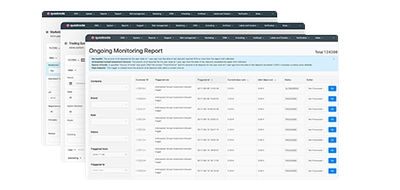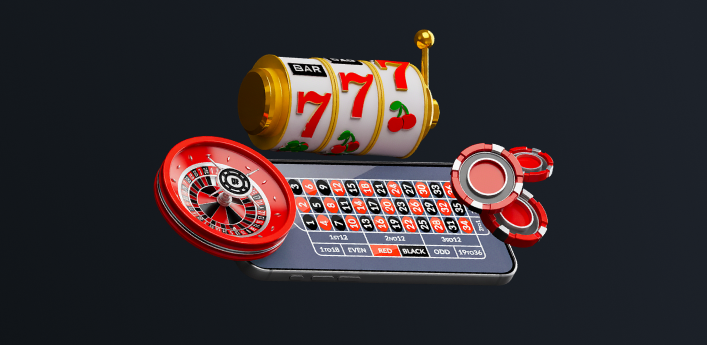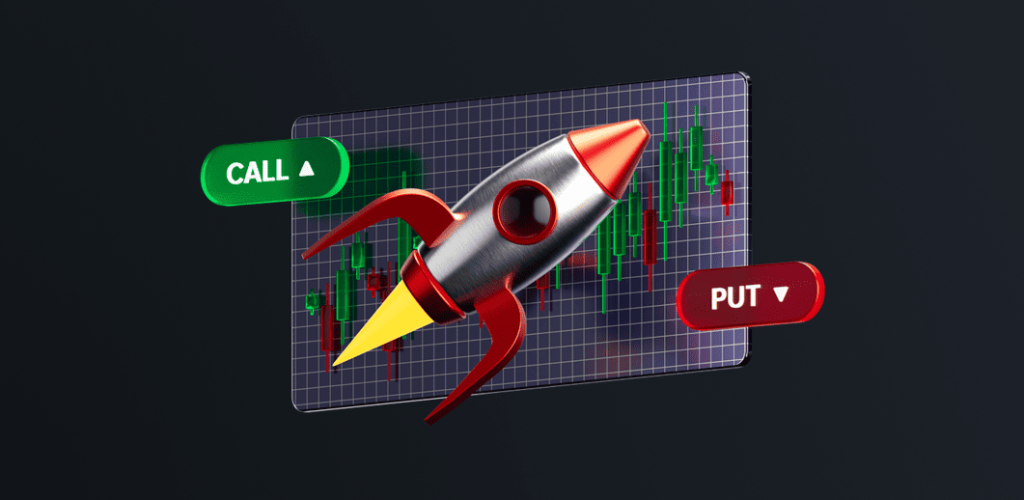กลับ
Contents
ช่องว่างมูลค่าเหมาะสมคืออะไรและจะใช้มันอย่างไร


Vitaly Makarenko
Chief Commercial Officer

Demetris Makrides
Senior Business Development Manager
Fair Value Gap (FVG) คือความไม่สมดุลของราคาบนกราฟ ซึ่งเกิดขึ้นเมื่อตลาดเคลื่อนไหวเร็วเกินไปในทิศทางใดทิศทางหนึ่ง ทำให้เกิดช่องว่างระหว่างแท่งเทียนที่ต่อเนื่องกัน ช่องว่างเหล่านี้แสดงถึงบริเวณที่ราคาเคลื่อนไหวโดยไม่มีคำสั่งซื้อขายที่ตรงกันข้ามมากพอที่จะเติมเต็มทั้งสองด้านของตลาด เทรดเดอร์ที่เชี่ยวชาญด้านการเงินมักตีความบริเวณเหล่านี้ว่าเป็นบริเวณที่กิจกรรมของสถาบันต่างๆ ได้รบกวนกระบวนการประมูลปกติ
การเข้าใจวิธีการระบุและใช้ Fair Value Gap ช่วยให้เทรดเดอร์คาดการณ์จุดพักตัวที่อาจเกิดขึ้น ค้นพบโซนสภาพคล่องที่ซ่อนอยู่ และปรับการเข้าซื้อขายให้สอดคล้องกับกระแสเงินทุนของสถาบัน ในบทความนี้ เราจะอธิบายว่า Fair Value Gap คืออะไร เหตุใดจึงสำคัญ และวิธีการนำไปใช้อย่างมีประสิทธิภาพในสภาพแวดล้อมการซื้อขายจริง
ช่องว่างมูลค่าเหมาะสมเกิดขึ้นได้อย่างไร
ช่องว่างมูลค่ายุติธรรม (Fair Value Gap) เกิดขึ้นเมื่อตลาดมีการเคลื่อนไหวอย่างรวดเร็ว ซึ่งมักเกิดจากแรงซื้อหรือขายของสถาบันที่ก้าวร้าว ระหว่างการเคลื่อนไหวนี้ ราคาจะข้ามระดับที่ปกติแล้วการซื้อขายจะเกิดขึ้น ทำให้เกิดความไม่สมดุลระหว่างผู้ซื้อและผู้ขาย ในกราฟแท่งเทียน ช่องว่างนี้จะปรากฏเป็นช่องว่างระหว่างจุดต่ำสุดของแท่งเทียนหนึ่งกับจุดสูงสุดของแท่งเทียนสองแท่งถัดไป หรือในทางกลับกัน
เช่น ในการเคลื่อนไหวที่เป็นขาขึ้น
- แท่งเทียน 1 ปิดด้วยราคาสูง
- เทียนที่ 2 พุ่งขึ้น
- แท่งเทียนที่ 3 เปิดสูงขึ้น ทำให้เกิดช่องว่างระหว่างจุดสูงสุดของแท่งเทียนที่ 1 และราคาต่ำสุดของแท่งเทียนที่ 3
“ช่องว่าง” นี้หมายถึงระดับราคาที่แทบไม่มีหรือไม่มีกิจกรรมการซื้อขายเลย เรียกว่าความไม่สมดุล เทรดเดอร์สถาบันมักจะกลับมาตรวจสอบพื้นที่เหล่านี้อีกครั้งเพื่อเติมเต็มคำสั่งซื้อขายที่ค้างอยู่ ซึ่งทำให้พื้นที่เหล่านี้เป็นจุดที่อาจเกิดปฏิกิริยาของราคา การรวมตัว หรือการกลับตัว ช่องว่างมูลค่ายุติธรรม (Fair Value Gap) แตกต่างจากช่องว่างที่พบเห็นได้ทั่วไปในหุ้น ช่องว่างเหล่านี้ไม่ได้เกิดจากการปิดตลาดหรือเหตุการณ์ข่าว แต่เกิดขึ้นในช่วงการซื้อขายที่มีการซื้อขายอย่างต่อเนื่อง

วิธีการระบุช่องว่างมูลค่าเหมาะสมบนแผนภูมิ
การระบุตัวตน ช่องว่างมูลค่าที่เหมาะสม จำเป็นต้องสังเกตแท่งเทียนสามแท่งติดต่อกันบนกราฟราคา สิ่งสำคัญคือการค้นหาความไม่สมดุลของราคาที่สะท้อนถึงการซื้อขายที่ไม่มีประสิทธิภาพ ซึ่งตลาดได้ข้ามระดับราคาในช่วงที่มีการเคลื่อนไหวรุนแรง
ในสถานการณ์ที่เป็นขาขึ้น
- มองหาแท่งเทียนขาขึ้นสามแท่งติดต่อกัน
- เทียนแรกสร้างจุดสูงสุด
- แท่งเทียนที่ 2 ปิดสูงขึ้นด้วยโมเมนตัมที่แข็งแกร่ง
- แท่งเทียนที่สามเปิดสูงขึ้น ทิ้งช่องว่างที่มองเห็นได้ระหว่างจุดสูงสุดของแท่งเทียนแรกและจุดต่ำสุดของแท่งเทียนที่สาม
ในการเคลื่อนไหวขาลง
- มองหาแท่งเทียนขาลงสามอันติดต่อกัน
- เทียนแรกสร้างจุดต่ำ
- เทียนเล่มที่ 2 ลดลงอีก
- แท่งเทียนที่สามเปิดต่ำกว่า ทำให้เกิดช่องว่างระหว่างจุดต่ำสุดของแท่งเทียนแรกและจุดสูงสุดของแท่งเทียนที่สาม
ช่องว่างเหล่านี้มองเห็นได้ง่ายที่สุดบนกราฟ 5 นาที 15 นาที และ 1 ชั่วโมง แม้ว่าจะปรากฏในทุกกรอบเวลาก็ตาม เทรดเดอร์จะทำเครื่องหมายช่วงช่องว่างนี้ไว้เป็นโซนที่น่าสนใจ เพื่อคาดการณ์ว่าราคาอาจกลับมาอีกครั้ง
ควรพิจารณากราฟโดยพิจารณาบริบทประกอบเสมอ ช่องว่างไม่ได้บ่งชี้ถึงโอกาสที่ดีเสมอไป แต่หลายช่องว่างทำหน้าที่เป็นแม่เหล็กดึงดูดราคา โดยเฉพาะอย่างยิ่งเมื่อสอดคล้องกับกลุ่มสภาพคล่องหรือระดับตลาดสำคัญ
วิธีการซื้อขายโดยใช้ช่องว่างมูลค่าที่เหมาะสม
เมื่อพบช่องว่างมูลค่าที่เหมาะสม (Fair Value Gap) แล้ว เทรดเดอร์จะมองหาราคาที่จะกลับไปสู่ความไม่สมดุลนั้น การย่อตัวลงนี้มักถูกมองว่าเป็นโอกาสในการเข้าทิศทางเดียวกับการเคลื่อนไหวครั้งแรก ซึ่งสอดคล้องกับกระแสของสถาบัน
มีแนวทางทั่วไปสองประการ:
การปฏิเสธรายการ
เทรดเดอร์จะรอให้ราคาปรับตัวลดลงเข้าสู่โซน Fair Value Gap และแสดงสัญญาณการปฏิเสธ ซึ่งอาจรวมถึงไส้เทียนที่แข็งแกร่ง การเปลี่ยนแปลงโครงสร้างหรือการยืนยันจากปริมาณการซื้อขาย หรือสัญญาณจากกรอบเวลาที่สั้นลง เมื่อปฏิกิริยาตอบรับดี พวกเขาก็จะเข้าในทิศทางเดียวกับแรงกระตุ้นเริ่มต้น
เติมช่องว่างเต็ม
เทรดเดอร์บางรายเลือกที่จะรอให้ราคาเต็มโซนช่องว่างทั้งหมดก่อนจึงจะเข้าเทรด วิธีนี้ค่อนข้างอนุรักษ์นิยมและลดโอกาสในการเข้าเทรดก่อนเวลาอันควร เมื่อช่องว่างเต็มและราคาอยู่ในโซนที่กำหนดแล้ว ก็สามารถวางจุดเข้าเทรดได้โดยใช้จุดตัดขาดทุน (Stop) เลยขอบช่องว่างไปเล็กน้อย
การวางตำแหน่ง Stop Loss
เป็นเรื่องปกติที่จะวางจุดตัดขาดทุนไว้เหนือช่วง Fair Value Gap เล็กน้อย ขึ้นอยู่กับระดับความเสี่ยงและบริบทของตลาด เทรดเดอร์มักใช้จุดสูงสุดหรือจุดต่ำสุดของแท่งเทียน Gap เป็นเกณฑ์ตัดสิน
เป้าหมาย
โดยทั่วไปแล้ว เป้าหมายจะอยู่ที่จุดสูงสุดหรือจุดต่ำสุดของตลาดล่าสุด หรือใกล้กับโซนสภาพคล่องฝั่งตรงข้าม ส่วนขยายของฟีโบนัชชีและระดับความไม่สมดุลของปริมาณการซื้อขายสามารถเป็นแนวทางในการออกจากตลาดได้เช่นกัน
การซื้อขายช่องว่างมูลค่าที่เหมาะสมจะได้ผลดีที่สุดเมื่อจับคู่กับโครงสร้างตลาดโดยรวม โซนสภาพคล่อง และอคติที่ชัดเจน ช่องว่างเหล่านี้มีประสิทธิภาพมากที่สุดในสภาพแวดล้อมที่มีแนวโน้ม หรือหลังจากการเปลี่ยนแปลงของตลาด
ตัวอย่างจริงของช่องว่างมูลค่าที่เหมาะสมในการดำเนินการ
เพื่อให้เข้าใจการทำงานของ Fair Value Gap ในการซื้อขายจริงได้ดียิ่งขึ้น ลองมาดูตัวอย่างกราฟจากตลาดทั่วไป การตั้งค่าเหล่านี้จะช่วยเน้นว่าราคาจะตอบสนองอย่างไรเมื่อกลับเข้าสู่โซนที่ไม่สมดุล
ตัวอย่างที่ 1: EUR/USD บนกราฟ 15 นาที
คู่เงินนี้พุ่งขึ้นอย่างรวดเร็วในช่วงการซื้อขายในยุโรป ทำให้เกิด Fair Value Gap ที่เป็นขาขึ้นระหว่าง 1.0735 และ 1.0740 หลังจากแตะระดับ 1.0770 ราคาได้ย่อตัวลงและทะลุโซน FVG ก่อนที่จะปรับตัวสูงขึ้นต่อไป การยืนยันการเข้าซื้อปรากฏเป็นแท่งเทียน Engulfing ที่เป็นขาขึ้นภายใน Gap ซึ่งเปิดโอกาสในการซื้อที่ชัดเจน
ตัวอย่างที่ 2: NASDAQ 100 บนกราฟ 1 ชั่วโมง
ในช่วงที่ราคาหุ้นปรับตัวขึ้นตามกระแสข่าว ดัชนีแนสแด็กก็ปรับตัวลงอย่างรวดเร็ว ช่องว่างมูลค่ายุติธรรมขาลงก่อตัวขึ้นระหว่าง 15,240 ถึง 15,210 หลังจากนั้นราคาก็ปรับตัวลงมาปิดช่องว่าง ชะงักค้างอยู่สองแท่งเทียน ก่อนจะกลับมาเคลื่อนไหวในทิศทางขาลงอีกครั้ง เทรดเดอร์ใช้จุดเติมเต็มนี้เพื่อเข้าทำการซื้อขายระยะสั้น โดยตั้งเป้าไปที่จุดต่ำสุดก่อนหน้า
ตัวอย่างที่ 3: BTC/USD บนกราฟ 5 นาที
ในสภาวะที่มีความผันผวนสูง BTC จะทะลุแนวรับขึ้นไปด้านบน เหลือช่องว่างระหว่าง 26,380 ถึง 26,440 หากราคาย่อตัวลงเล็กน้อย ราคาจะเต็มโซน ดีดตัวขึ้นด้วยปริมาณการซื้อขายที่สูง และกลับสู่แนวโน้ม การเข้าซื้อระยะสั้นโดยใช้ช่องว่างเป็นแนวรับ ถือเป็นโอกาสที่มีความเสี่ยงต่ำ

เครื่องมือและแพลตฟอร์มสำหรับการระบุช่องว่างมูลค่าที่เหมาะสม
การระบุช่องว่างมูลค่ายุติธรรมด้วยตนเองนั้นใช้เวลานานและอาจไม่สอดคล้องกัน โดยเฉพาะอย่างยิ่งสำหรับเทรดเดอร์ที่ติดตามตราสารหลายรายการ แพลตฟอร์มการซื้อขายและเครื่องมือสร้างแผนภูมิสมัยใหม่นำเสนอวิธีที่มีประสิทธิภาพในการตรวจจับช่องว่างเหล่านี้ได้อย่างแม่นยำ
แพลตฟอร์มการซื้อขาย Quadcode
แพลตฟอร์ม ควอดโค้ด ประกอบด้วยการสร้างแผนภูมิขั้นสูงและการผสานรวมตัวบ่งชี้ โบรกเกอร์ที่สร้างบน ควอดโค้ด สามารถนำเสนอเครื่องมือแสดงภาพขั้นสูงสำหรับเทรดเดอร์ ตัวบ่งชี้ FVG ที่กำหนดเอง และฟีเจอร์การวาดภาพในตัว ช่วยให้ผู้ใช้สามารถมองเห็นความไม่มีประสิทธิภาพของราคาแบบเรียลไทม์และตอบสนองได้อย่างรวดเร็ว
เทรดดิ้งวิว
TradingView ช่วยให้เทรดเดอร์สามารถสร้างสคริปต์แบบกำหนดเองได้โดยใช้ Pine Script มีอินดิเคเตอร์ทั้งแบบฟรีและแบบเสียเงินที่เน้น Fair Value Gap โดยอัตโนมัติ มองหาสคริปต์เช่น "FVG Finder" หรือ "Imbalance Detector" ในไลบรารีสาธารณะเพื่อทำเครื่องหมายโซนช่องว่างบนกราฟของคุณโดยตรง
เมตาเทรดเดอร์ 5 (MT5)
อินดิเคเตอร์ MT5 บางตัวจะสแกนแท่งเทียนเพื่อหาโซนราคาที่หายไประหว่างจุดสูงสุดและจุดต่ำสุดของลำดับ และวาดกรอบแสดงตำแหน่งที่เกิด FVG ซึ่งเป็นประโยชน์สำหรับเทรดเดอร์ที่ใช้ MT5 สำหรับการเทรด Forex หรือ CFD
เมื่อช่องว่างมูลค่าที่เหมาะสมมีความน่าเชื่อถือมากที่สุด
ช่องว่างมูลค่ายุติธรรมไม่ได้นำไปสู่โอกาสที่คุ้มค่าในการซื้อขายทุกครั้ง ความน่าเชื่อถือของช่องว่างดังกล่าวจะเพิ่มขึ้นภายใต้เงื่อนไขเฉพาะ เทรดเดอร์สามารถปรับปรุงความแม่นยำได้โดยมุ่งเน้นไปที่การตั้งค่าที่ตรงตามเกณฑ์ต่อไปนี้:
- เกิดขึ้นหลังจากการทะลุผ่านอย่างแข็งแกร่ง - ช่องว่างที่เกิดขึ้นหลังจากการทะลุแนวรับหรือแนวต้านอย่างชัดเจน มักจะเป็นความไม่สมดุลที่แท้จริง ซึ่งมักเป็นสัญญาณบ่งชี้ถึงโซนเข้าของสถาบันที่ราคาอาจกลับขึ้นไปทดสอบอีกครั้ง
- สอดคล้องกับโครงสร้างตลาด - FVG ที่เกิดขึ้นภายในแนวโน้มที่กำหนดไว้อย่างชัดเจน (จุดสูงและจุดต่ำสูงขึ้นในแนวโน้มขาขึ้น หรือจุดสูงและจุดต่ำต่ำลงในแนวโน้มขาลง) นั้นมีความน่าเชื่อถือมากกว่า
- รองรับโดยปริมาณหรือกระแสคำสั่งซื้อ - FVG ที่ได้รับการยืนยันจากปริมาณการซื้อขายที่เพิ่มขึ้นหรือความไม่สมดุลของคำสั่งซื้อขาย มีโอกาสสูงที่จะเกิดปฏิกิริยา สิ่งเหล่านี้บ่งชี้ถึงความสนใจในการซื้อหรือขายที่แท้จริงที่อยู่เบื้องหลังการเคลื่อนไหวดังกล่าว
- ปรากฏใกล้โซนสภาพคล่องหลัก - FVG ที่อยู่ใกล้จุดสูงสุด จุดต่ำสุด หรือพื้นที่ที่เป็นจุดที่ต้องหยุดการซื้อขายล่าสุด มักจะดึงดูดความสนใจจากนักลงทุนที่ชาญฉลาด
ช่องว่างมูลค่าที่เป็นธรรมในการซื้อขายด้วยอัลกอริทึมและเงินอัจฉริยะ
ช่องว่างมูลค่ายุติธรรม (Fair Value Gap) ได้รับความนิยมมากขึ้นเนื่องจากเชื่อมโยงกับแนวคิดทางการเงินอัจฉริยะ (Smart Money) และพฤติกรรมการซื้อขายแบบอัลกอริทึม ช่องว่างเหล่านี้มักแสดงถึงร่องรอยที่สถาบันต่างๆ ทิ้งไว้โดยใช้อัลกอริทึมการดำเนินการความถี่สูง ซึ่งเข้าหรือออกจากสถานะขนาดใหญ่ในหลายระดับราคา
อัลกอริทึมของสถาบันมักไม่ค่อยดำเนินการตามคำสั่งซื้อในราคาเดียว แต่จะดำเนินการแบบเป็นชุด ซึ่งบางครั้งอาจทำให้ราคาพุ่งสูงขึ้นหรือลดลงอย่างรวดเร็ว เหลือพื้นที่ว่างไว้ ช่องว่างมูลค่าที่เหมาะสม ความไม่สมดุลเหล่านี้จะถูกนำมาใช้เป็นโซนอ้างอิงโดยผู้เข้าร่วมคนเดียวกันหรือคนอื่นๆ ที่ต้องการเติมคำสั่งซื้อที่เหลืออยู่
นักเทรดเงินที่ชาญฉลาดมักตีความโซนเหล่านี้เป็นพื้นที่ที่มีอัตราดอกเบี้ยสูง เมื่อราคากลับเข้าสู่ Fair Value Gap มักจะเกิดปฏิกิริยาตอบสนอง ไม่ว่าจะเป็นการดูดซับ (การกลับเข้ามาของผู้เล่นรายใหญ่) หรือการปฏิเสธ (การออกจากสถานะเดิมแบบป้องกัน) พฤติกรรมนี้เองที่ทำให้ FVG เป็นส่วนสำคัญของกลยุทธ์การซื้อขายที่ใช้เงินอย่างชาญฉลาด โดยเฉพาะอย่างยิ่งกลยุทธ์ที่สร้างขึ้นจากการจัดการสภาพคล่อง การเปลี่ยนแปลงโครงสร้างตลาด และทฤษฎีบล็อกคำสั่ง
การรวมช่องว่างมูลค่าที่เหมาะสมกับแนวคิดอื่น ๆ
FVG จะมีประสิทธิภาพสูงสุดเมื่อใช้ร่วมกับเครื่องมือเสริม ไม่ได้ออกแบบมาเพื่อใช้งานแบบแยกส่วน และการรวมเข้ากับแนวคิดต่อไปนี้จะช่วยเพิ่มความแม่นยำ:
- สระสภาพคล่อง - ระบุตำแหน่งที่คำสั่งตัดขาดทุนของเทรดเดอร์มักจะรวมกลุ่มกัน FVG ใกล้ระดับเหล่านี้ทำหน้าที่เป็นแม่เหล็กดึงดูดราคา เนื่องจากผู้เล่นสถาบันจะหาจุดตัดขาดทุนก่อนที่จะขยับราคาไปในทิศทางที่ต้องการ
- บล็อกเบรกเกอร์และบล็อกสั่งซื้อ - เขตอุปทานหรืออุปสงค์เหล่านี้กำหนดพื้นที่การไหลของคำสั่งซื้อของสถาบัน FVG ภายในเขตเหล่านี้มักมีปฏิกิริยาตอบสนองสูง
- เซสชั่นตลาดและเวลา - ช่องว่างที่เกิดขึ้นระหว่างเซสชั่นลอนดอนหรือนิวยอร์ก ซึ่งเป็นช่วงที่มีปริมาณการซื้อขายสูงสุด มีแนวโน้มที่จะสร้างการตั้งค่าที่เชื่อถือได้มากกว่าช่องว่างที่เกิดขึ้นในช่วงที่มีสภาพคล่องต่ำ
- การวิเคราะห์ช่วงภายในเทียบกับช่วงภายนอก - ผู้ซื้อขายที่วิเคราะห์ FVG ที่เกี่ยวข้องกับช่วงราคาภายใน (ช่วงกลาง) หรือภายนอก (ช่วงราคาสูง/ต่ำ) มักจะพบความแม่นยำที่ดีกว่าในการกำหนดเป้าหมายและจุดเข้า
บทสรุป
ช่องว่างมูลค่ายุติธรรม (Fair Value Gaps) ช่วยให้เทรดเดอร์มองเห็นกิจกรรมของสถาบันและความไม่มีประสิทธิภาพของตลาดได้อย่างมีประสิทธิภาพ การเรียนรู้ที่จะระบุความไม่สมดุลเหล่านี้และทำความเข้าใจว่าราคาเคลื่อนไหวอย่างไรจะช่วยให้เทรดเดอร์สามารถเข้าถึงการตั้งค่าการซื้อขายที่มักถูกมองข้ามจากสายตาของนักลงทุนรายย่อย เมื่อใช้ร่วมกับเครื่องมือโครงสร้าง สภาพคล่อง และเครื่องมือยืนยัน ช่องว่างมูลค่ายุติธรรม (FVG) สามารถเพิ่มความแม่นยำและความมั่นใจให้กับกลยุทธ์การซื้อขายทั้งแบบรายวันและแบบสวิง
ไม่ว่าคุณจะเทรดฟอเร็กซ์ ดัชนี หรือคริปโต การรู้จักโซนเหล่านี้จะช่วยปรับปรุงจังหวะการเข้าเทรด การบริหารความเสี่ยง และการตีความตลาด เครื่องมืออย่างแพลตฟอร์ม Quadcode ช่วยให้การตรวจจับและตอบสนองต่อช่องว่างมูลค่ายุติธรรม (Fair Value Gap) ง่ายขึ้น ช่วยให้เทรดเดอร์สามารถปรับทิศทางคำสั่งซื้อขายให้สอดคล้องกับระดับสถาบัน และสร้างการตั้งค่าที่มีประสิทธิภาพมากขึ้น
FAQ
ช่องว่างมูลค่ายุติธรรม (Fair Value Gap) คือความไม่สมดุลของราคาที่เกิดขึ้นเมื่อตลาดเคลื่อนไหวเร็วเกินไปในทิศทางใดทิศทางหนึ่ง จนข้ามโซนที่การจับคู่ราคาเสนอซื้อ-เสนอขายจะเกิดขึ้นตามปกติ ช่องว่างนี้ทำให้เกิดช่องว่างที่มองเห็นได้ระหว่างแท่งเทียนบนกราฟ ซึ่งมักถูกตีความว่าเป็นปัจจัยขับเคลื่อนจากสถาบัน
ไม่ ช่องว่างแบบดั้งเดิม เช่น ช่องว่างในตลาดหุ้น มักเกิดขึ้นระหว่างช่วงตลาดหรือจากการเผยแพร่ข่าว ช่องว่างมูลค่ายุติธรรมเกิดขึ้นระหว่างเวลาซื้อขาย และสะท้อนถึงสภาพคล่องที่ขาดหายไปอันเนื่องมาจากโมเมนตัมหรือความไม่สมดุล
FVG ปรากฏบนทุกกรอบเวลา แต่เทรดเดอร์หลายรายเน้นกราฟ 15 นาที 1 ชั่วโมง และ 4 ชั่วโมงเพื่อความชัดเจน นักเก็งกำไรระยะสั้นอาจใช้กราฟ 1 นาทีหรือ 5 นาที ในขณะที่เทรดเดอร์แบบสวิงมักนิยมใช้กรอบเวลาที่สูงขึ้น
ไม่แนะนำให้ใช้ FVG ทำงานได้ดีที่สุดเมื่อใช้ร่วมกับโครงสร้างตลาด การวิเคราะห์สภาพคล่อง และเครื่องมือยืนยัน เช่น RSI หรือ Volume FVG ให้ความแม่นยำมากกว่าเมื่อเป็นส่วนหนึ่งของกรอบการทำงานที่กว้างกว่า
ใช่ แพลตฟอร์มการซื้อขายที่สร้างบน Quadcode เช่น IQ Option และ CasaTrade มาพร้อมกับระบบสร้างแผนภูมิขั้นสูง ตัวบ่งชี้ที่กำหนดเอง และเครื่องมือวาดภาพที่ช่วยให้เทรดเดอร์สามารถทำเครื่องหมายและตอบสนองต่อ FVG ได้อย่างรวดเร็วและแม่นยำ
อัปเดต:
23 มิถุนายน 2568




